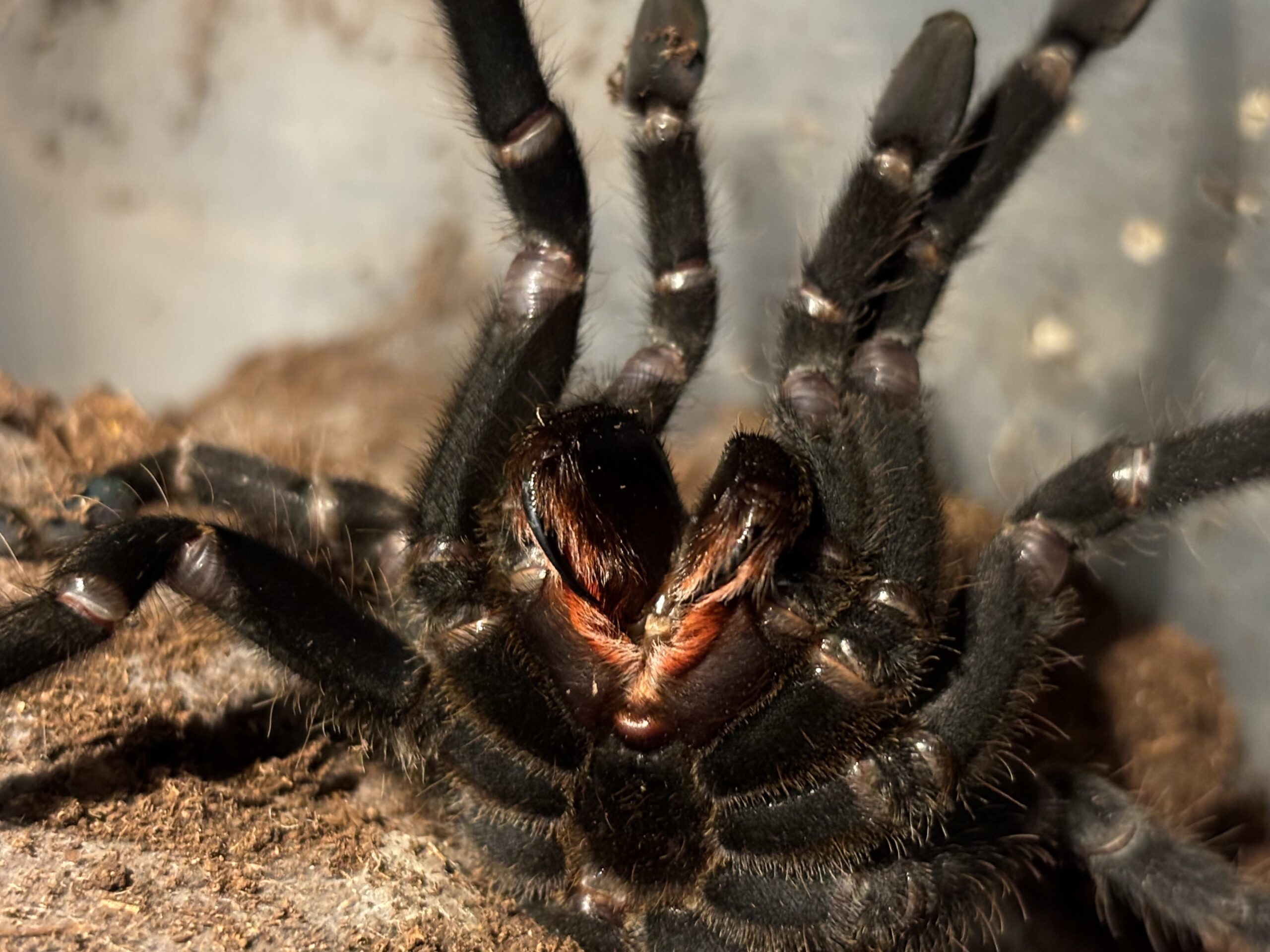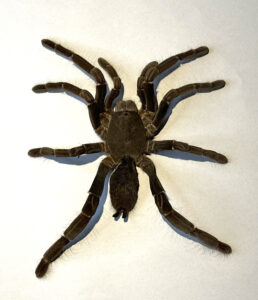Tarantulas, like all spiders, have a exoskeleton made of chitin. They got eight legs and two pedipalps which are used for grabbing the food items, for touch and when mating. On each leg the last segment, the tarsus, have two or three claws used for climbing. On each legs tarsus and metatarsus there is tufts or hair called scopulae which enables the tarantula to grip the surface and even climb very smooth surfaces. The end part of the spider is called abdomen and the front part cephalothorax, and the top of the cephalothorax is called carapace. All tarantulas got eight eyes located on top of carapace with the exception of the mexican cave living genus Hemirrhagus in which some species completely lost their eyes. Below the eyes are the mouth and chelicera with the fangs. 
The stomach with internal organs and respitory organs, called booklungs, are located in the abdomen. The size of theraphosids varies from the bodylength of approx 16 mm Aphonopelma paloma to Theraphosa blondi that measures up to 100 mm bodylength.
Dorsal view

I – leg 1
II – leg 2
III – leg 3
IV – leg 4
a – carapace
b – chelicarae
c – pedipalp
d – abdomen
Carapace
a – eyes
b – fovea
Ventral view

a – chelicerae with fangs
b – maxillary lobe
c – labium
d – sternum
e – anterior booklung
f – epigastric furrow
h – posterior booklung
i – spinnerets
LEG I
a – coxa
b – trochanter
c – femur
d– patella
e – tibia
f – tibia spurs
g – metatarsus
h – tarsus
i – claws
At the lower end of the abdomen are the anal and the spinnerets. Tarantulas look hairy and most american species also got so called urticating ”hair” (setae) on their abdomen for defense. Its not hair per se like mammal hair growing out of a hair sack, but protrusions from the exoskeleton which break off easily. Urticating setae is the correct name and there are seven types of urticating setae, type I is less itchy then type VII and it all depends on how they are structured.
The urticating hair is located on the top of the abdomen on a patch and kicked off by rubbing the back legs. The rubbed off hair penetrates skin and mucous membrane of the aggressor which cause discomfort and will most likely deter further attacks. The same hair are also used to cover eggsacks and to cover the entrance of the burrow. Some of the hair on the tarantulas legs are used for locating food, as well as picking up particles in the air to sense the temperature and humidity. The Old World species lack urticating hairs and primarily use it’s chelicera for defense. At least one american genera, Ephebopus, have urticating hair located on the pedipalps.
There is a new interesting article about the hirsute tarantulas and the defense against marauding ants (see below).
External links
An extensive review of mutualistic and similar ecological associations involving tarantulas (Araneae: Theraphosidae), with a new hypothesis on the evolution of their hirsuteness – Alireza Zamani, Rick C. West, William W. Lamar https://doi.org/10.1080/00222933.2024.238240
https://journals.plos.org/plosone/article?id=10.1371/journal.pone.0224384
